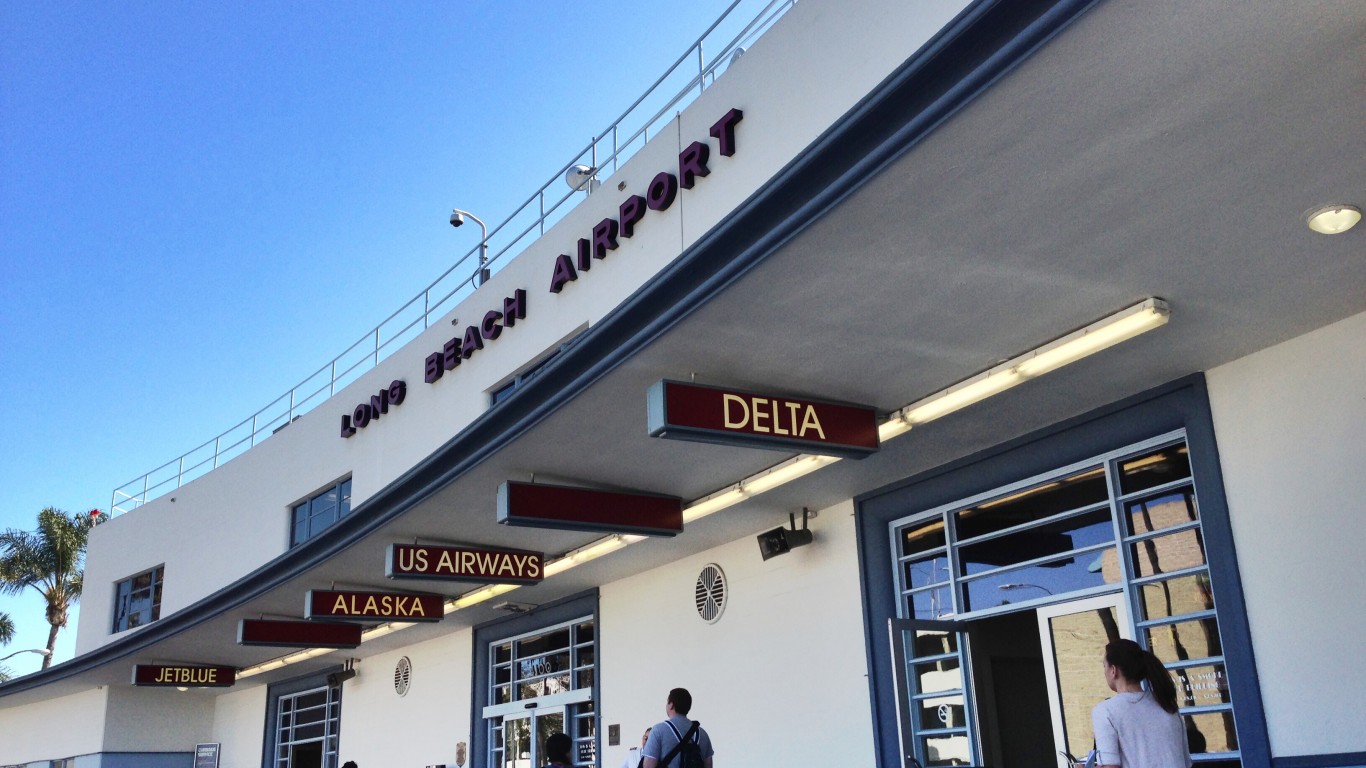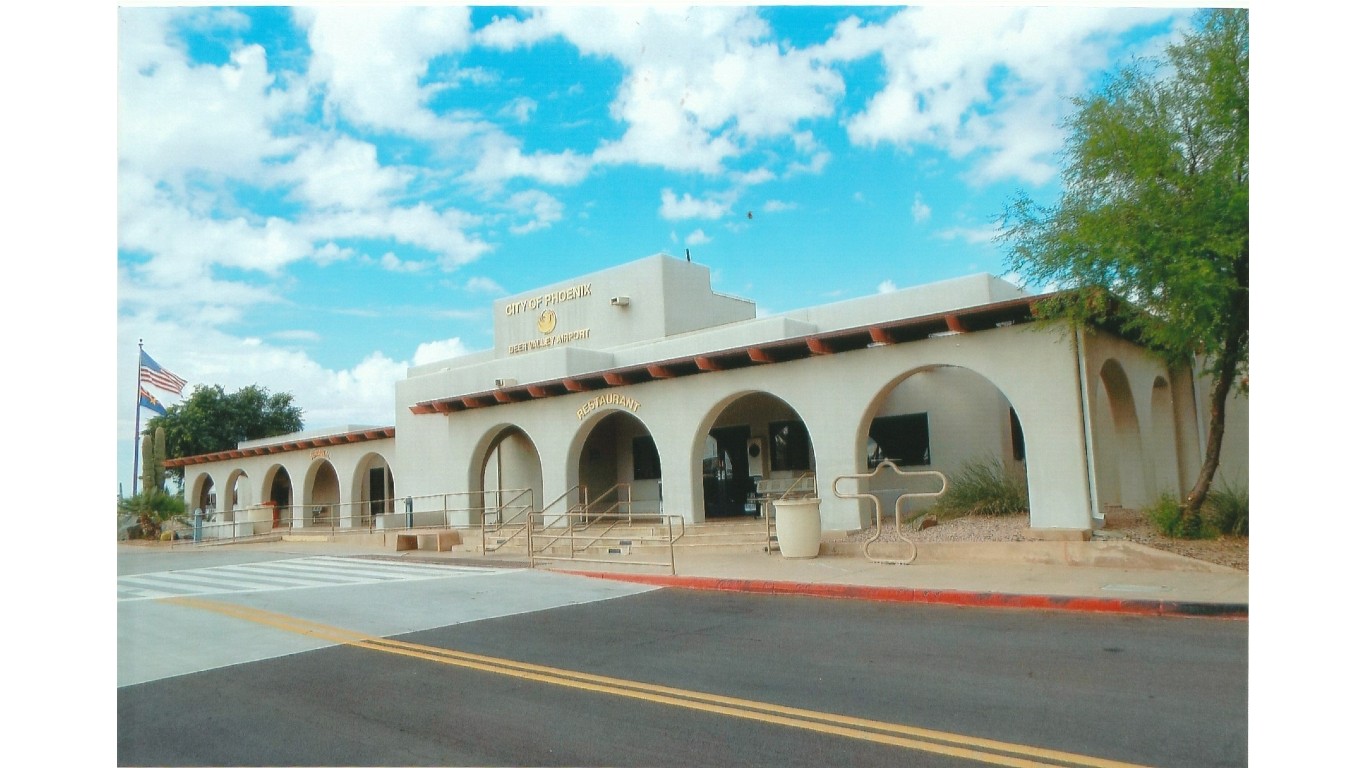
The U.S. banned leaded gasoline for cars in 1996 with the Clean Air Act as a way to protect Americans from harmful lead poisoning. Yet tens of thousands of Americans are still exposed to the harmful byproducts of such fuels each year, because leaded fuel is still used in some piston-engine airplanes – more than 170,000 of them, according to climate activist group Earthjustice.
Piston-engine planes are typically smaller aircraft with a propeller on the front, fitting just a few passengers. Such planes often fly out of smaller regional airports, as opposed to larger commercial planes used by most passengers. (Such planes are unlikely to fly out of the biggest airports in the world.)
These planes account for the vast majority of the lead released into the American atmosphere – thousands of pounds of it annually, particularly near airport – causing potentially harmful effects to the people living nearby.
To determine the airports with the most dangerous air, 24/7 Tempo reviewed an Earthjustice analysis of data from the Environmental Protection Agency on the airports with the most total lead emissions over the last year.
Click here to see the U.S. airports with the most dangerous air
A recent study found that children living within a half mile of a local airport had significantly higher lead levels in their blood than those who lived farther away. There is no known safe quantity of lead. Children who are exposed to lead may suffer lowered cognitive function, antisocial behavior, and other severe neurological effects, according to the World Health Organization.
Most of the 30 airports with the highest total lead emissions are in Western states like California, Arizona, Colorado, and Washington. These airports, though smaller, are often near major cities, and their emissions contribute to bad air quality in places like Phoenix, San Diego, and Los Angeles. (These are America’s dirtiest cities.)
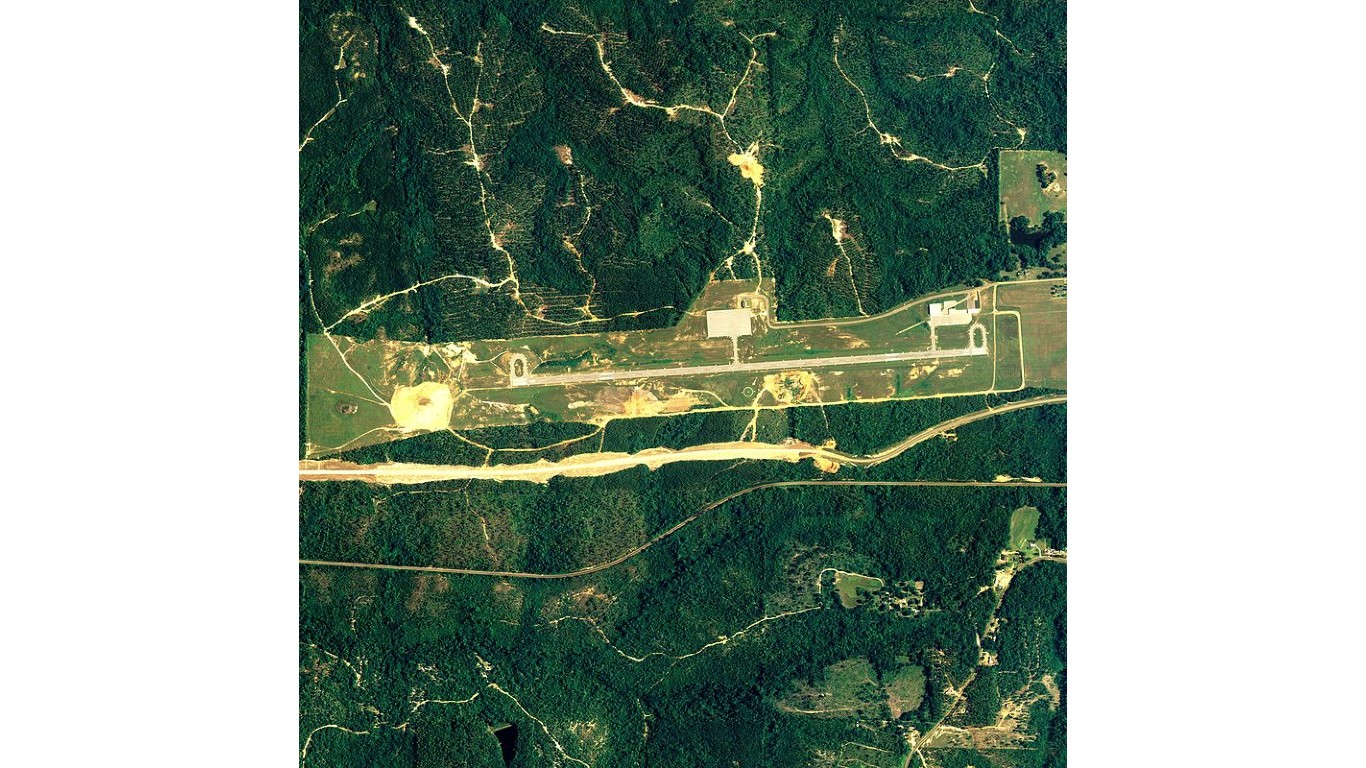
30. Bay Minette Municipal Airport
> Lead emissions: 777 pounds
> Location: Bay Minette, AL
> Est. population within one mile: 252
> Pct. of local population under five years old: 10.0%
[in-text-ad]

29. Greeley-Weld County Airport
> Lead emissions: 795 pounds
> Location: Greeley, CO
> Est. population within one mile: 211
> Pct. of local population under five years old: 3.8%
28. Livermore Municipal Airport
> Lead emissions: 799 pounds
> Location: Livermore, CA
> Est. population within one mile: 2,880
> Pct. of local population under five years old: 6.4%
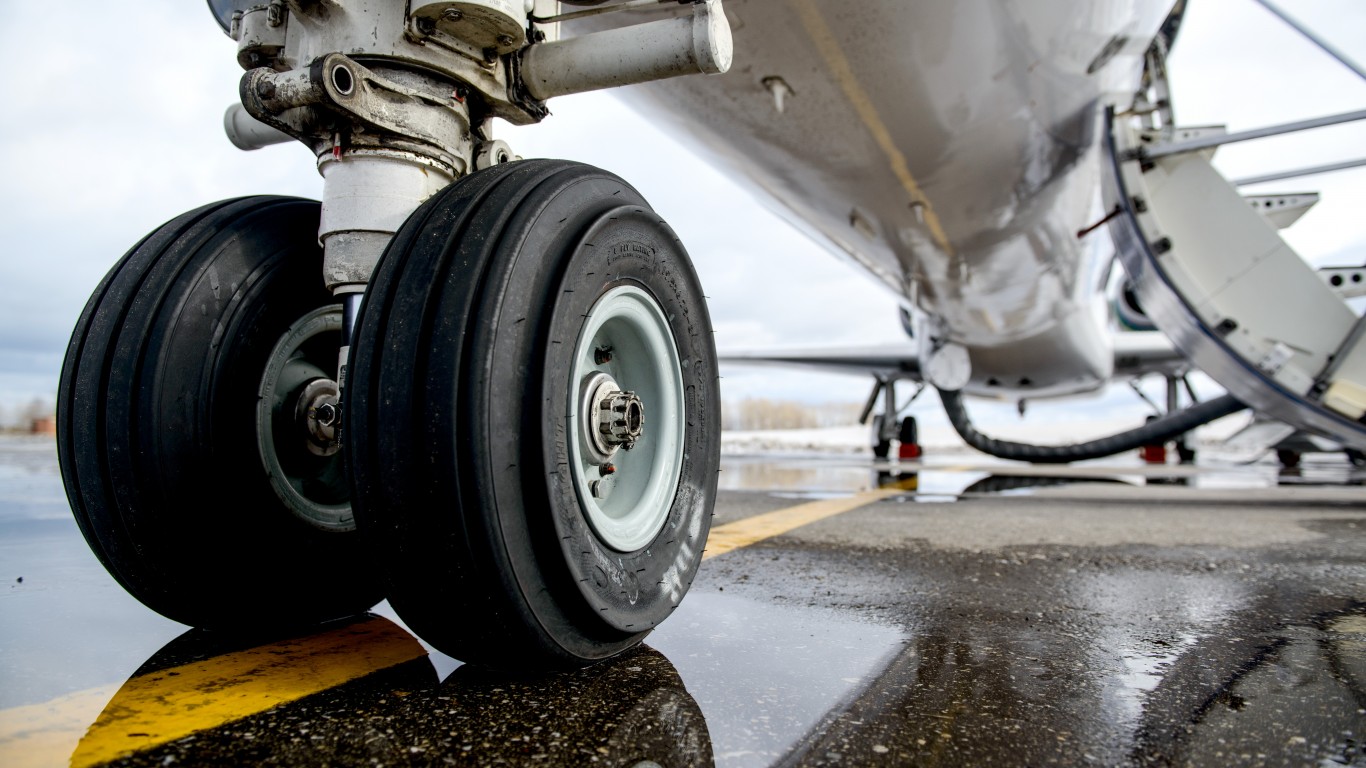
27. Vero Beach Municipal Airport
> Lead emissions: 800 pounds
> Location: Vero Beach, FL
> Est. population within one mile: 1,069
> Pct. of local population under five years old: 4.2%
[in-text-ad-2]
26. Caldwell Industrial Airport
> Lead emissions: 808 pounds
> Location: Caldwell, ID
> Est. population within one mile: 4,946
> Pct. of local population under five years old: 11.1%

25. Fort Worth Meacham International Airport
> Lead emissions: 831 pounds
> Location: Fort Worth, TX
> Est. population within one mile: 4,665
> Pct. of local population under five years old: 12.9%
[in-text-ad]
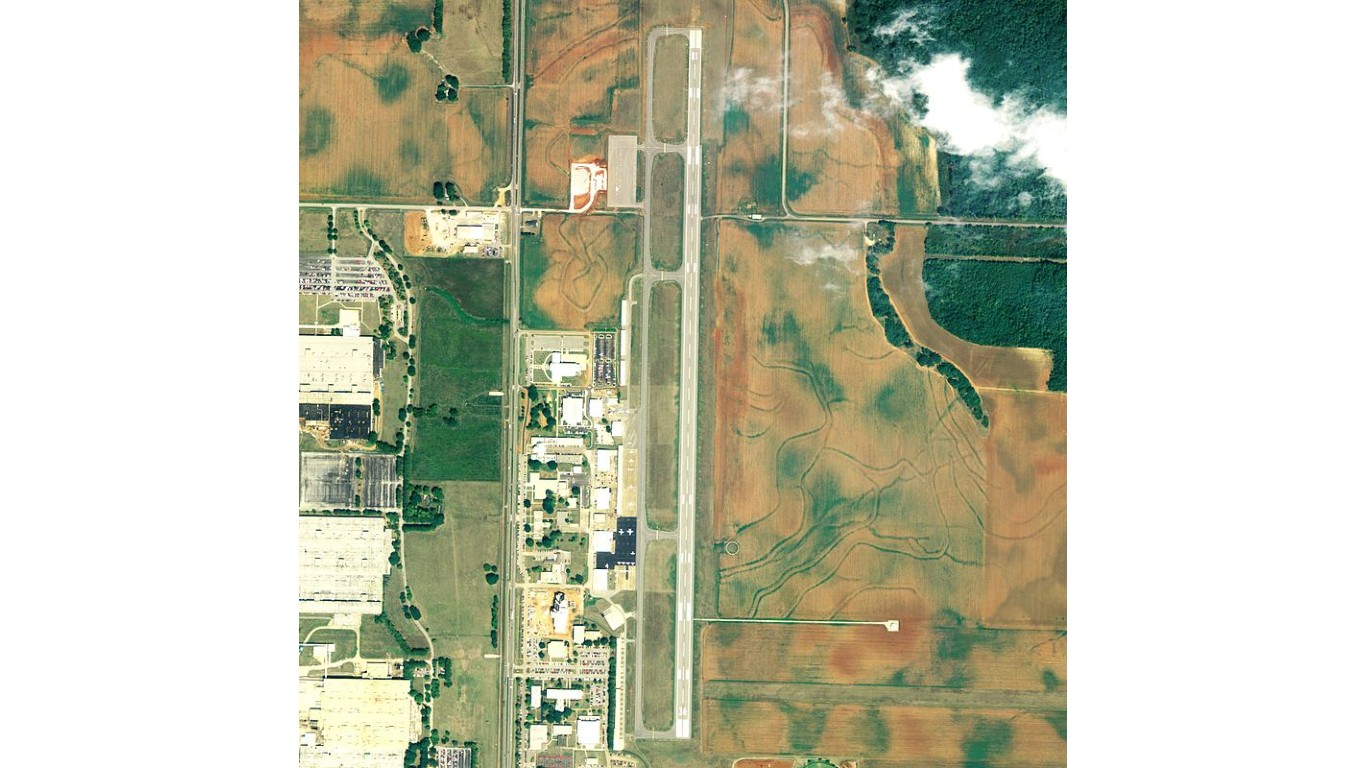
24. Pryor Field Regional Airport
> Lead emissions: 841 pounds
> Location: Decatur, AL
> Est. population within one mile: 364
> Pct. of local population under five years old: 5.5%
23. New Smyrna Beach Municipal Airport
> Lead emissions: 848 pounds
> Location: New Smyrna Beach, FL
> Est. population within one mile: 2,103
> Pct. of local population under five years old: 1.9%
22. Auburn Municipal Airport
> Lead emissions: 891 pounds
> Location: Auburn, WA
> Est. population within one mile: 8,481
> Pct. of local population under five years old: 9.7%
[in-text-ad-2]
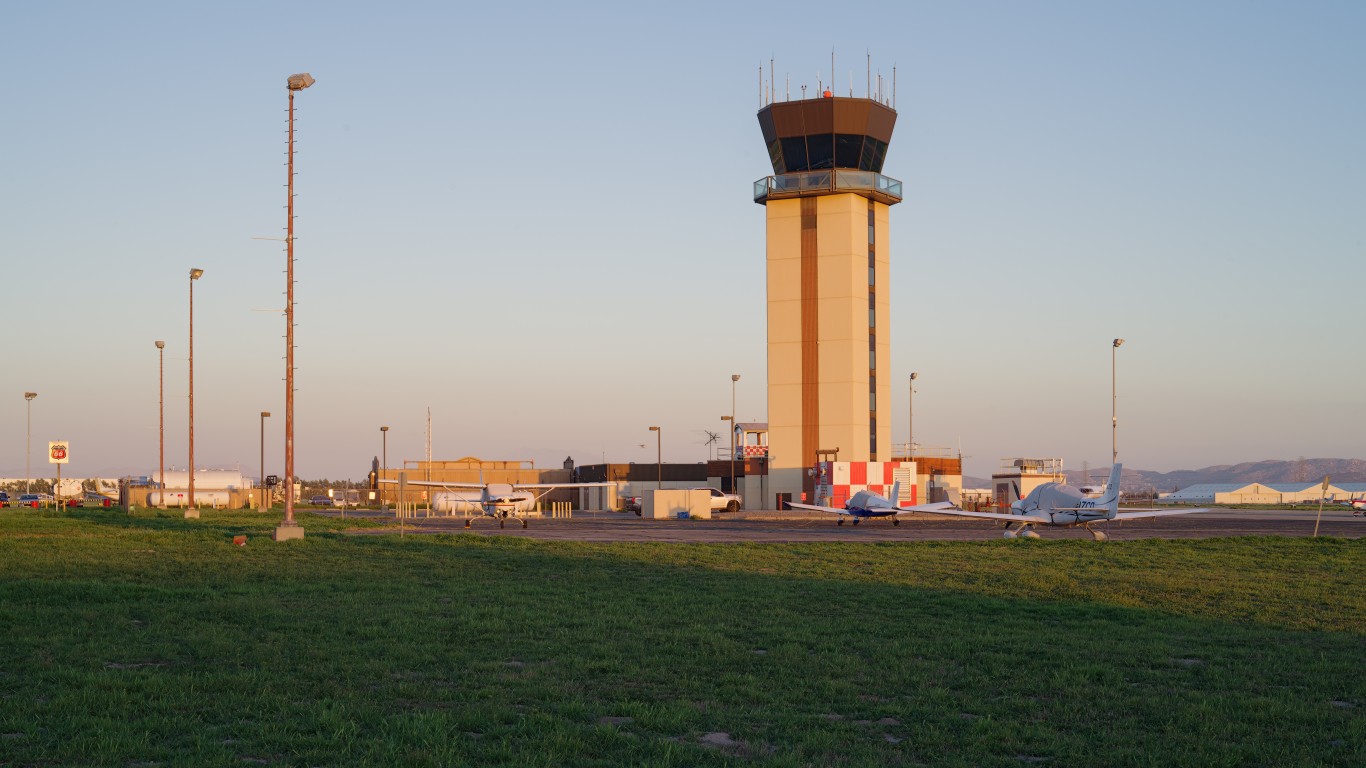
21. Chino Airport Airport
> Lead emissions: 955 pounds
> Location: Chino, CA
> Est. population within one mile: 3,488
> Pct. of local population under five years old: 9.4%
20. Kendall-Tamiami Executive Airport
> Lead emissions: 964 pounds
> Location: Miami, FL
> Est. population within one mile: 8,279
> Pct. of local population under five years old: 5.6%
[in-text-ad]
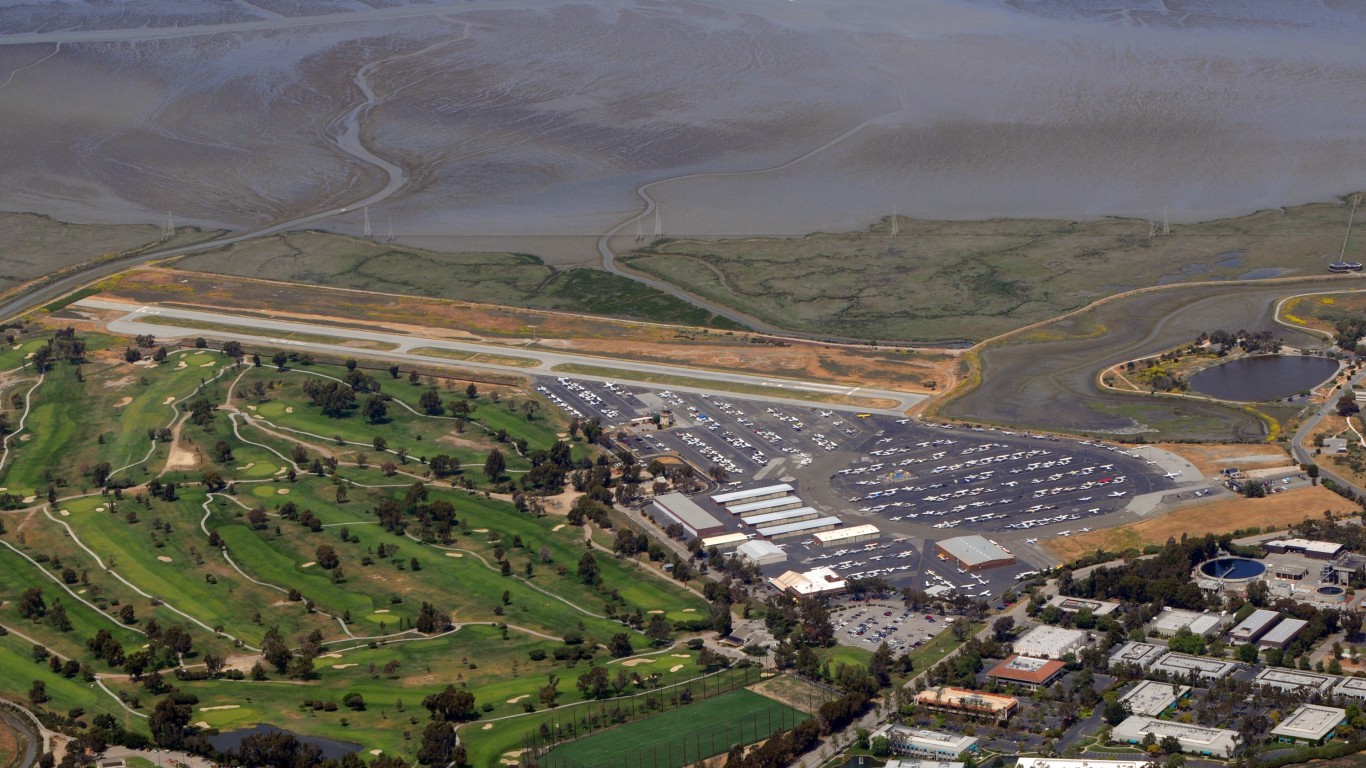
19. Palo Alto Airport
> Lead emissions: 966 pounds
> Location: Palo Alto, CA
> Est. population within one mile: 5,692
> Pct. of local population under five years old: 5.5%
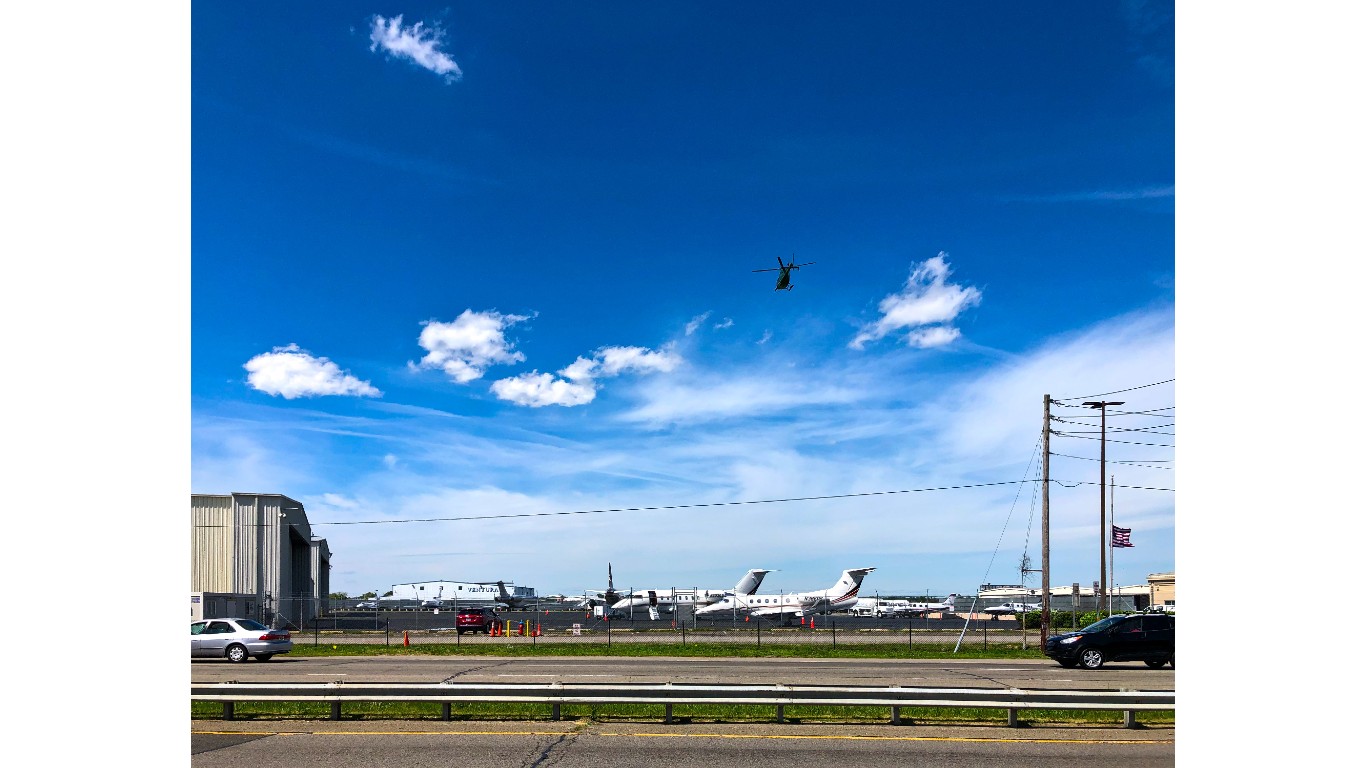
18. Republic Airport
> Lead emissions: 1,004 pounds
> Location: Farmingdale, NY
> Est. population within one mile: 3,414
> Pct. of local population under five years old: 7.4%
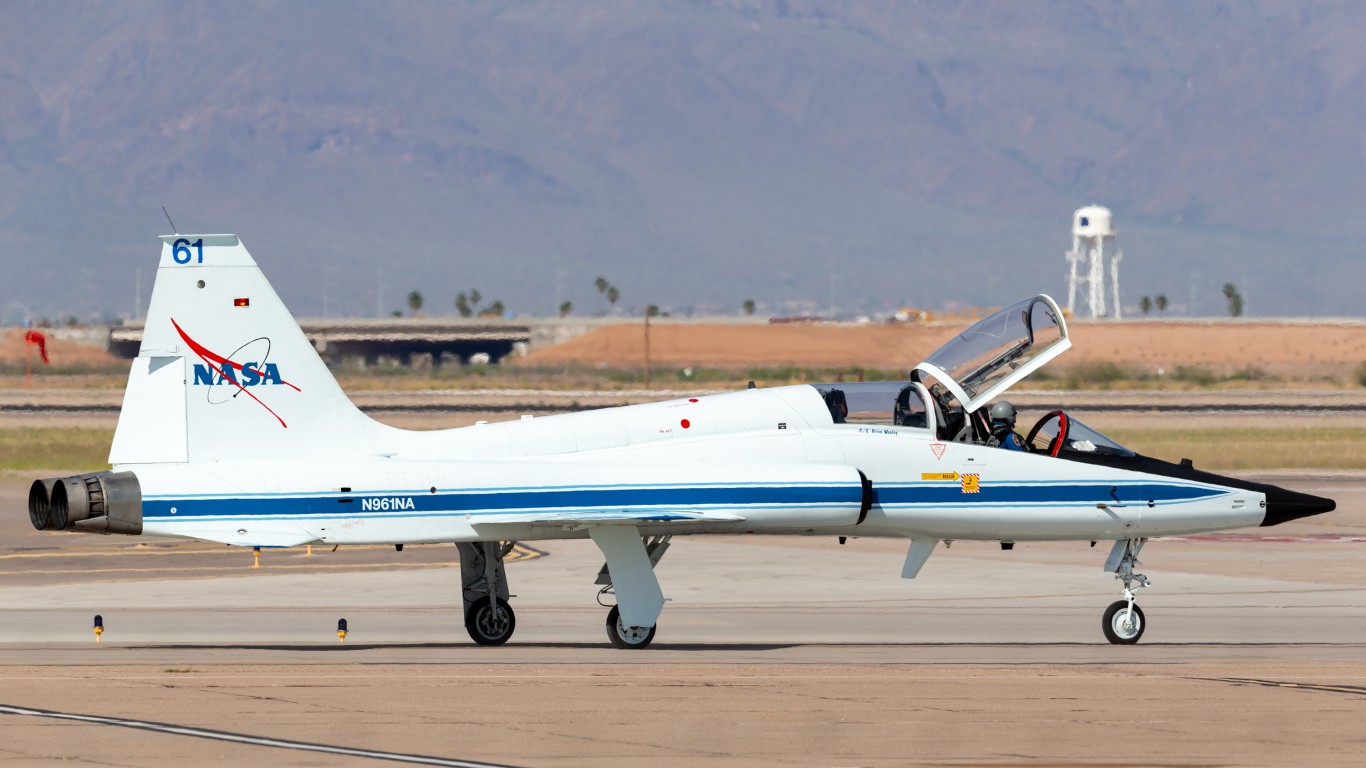
17. Phoenix-Mesa Gateway Airport
> Lead emissions: 1,034 pounds
> Location: Phoenix, AZ
> Est. population within one mile: 514
> Pct. of local population under five years old: 11.6%
[in-text-ad-2]
16. John Wayne Airport Airport
> Lead emissions: 1,037 pounds
> Location: Santa Ana, CA
> Est. population within one mile: 7,840
> Pct. of local population under five years old: 2.7%
15. Falcon Field Airport
> Lead emissions: 1,078 pounds
> Location: Mesa, AZ
> Est. population within one mile: 2,090
> Pct. of local population under five years old: 5.2%
[in-text-ad]
14. Daytona Beach International Airport
> Lead emissions: 1,096 pounds
> Location: Daytona Beach, FL
> Est. population within one mile: 659
> Pct. of local population under five years old: 3.7%

13. Gillespie Field Airport
> Lead emissions: 1,145 pounds
> Location: San Diego/El Ca, CA
> Est. population within one mile: 9,126
> Pct. of local population under five years old: 8.8%
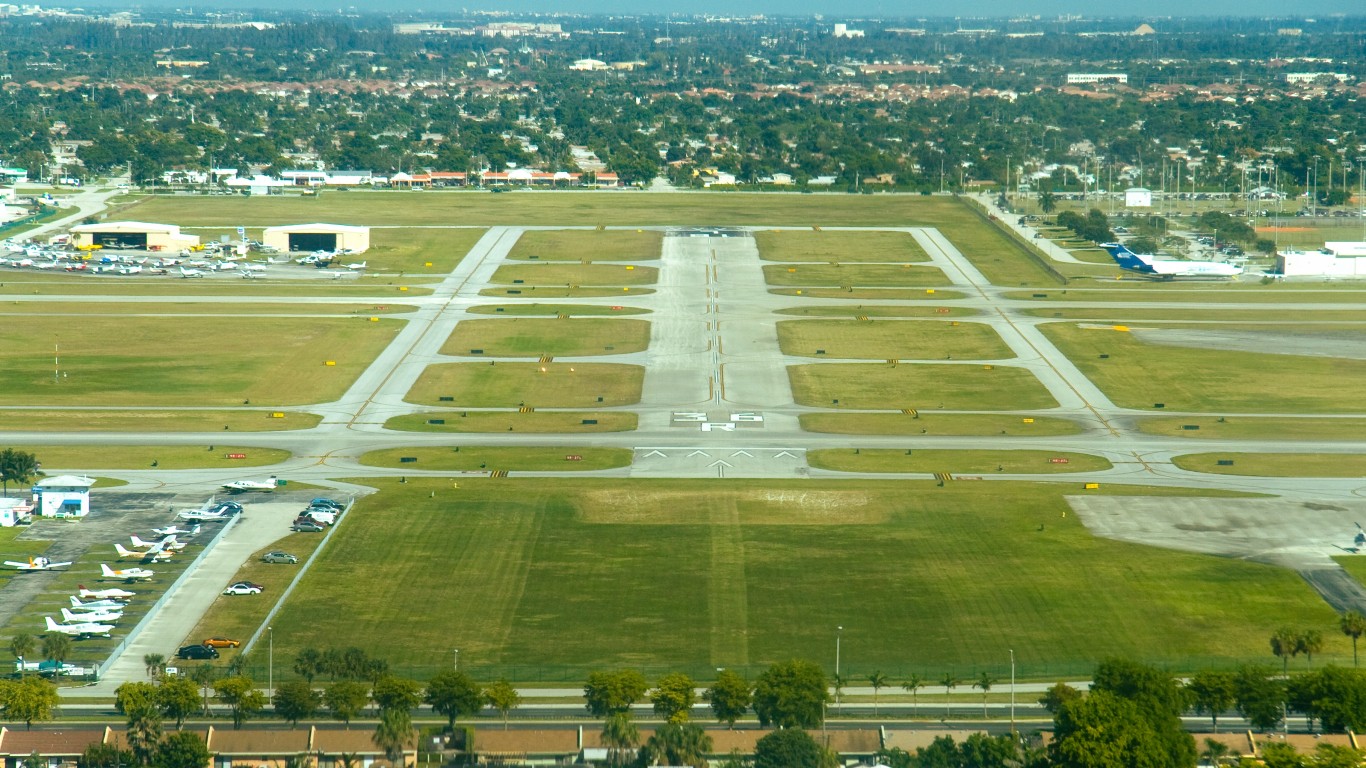
12. North Perry Airport
> Lead emissions: 1,166 pounds
> Location: Hollywood, FL
> Est. population within one mile: 24,028
> Pct. of local population under five years old: 6.8%
[in-text-ad-2]

11. Montgomery Field Airport
> Lead emissions: 1,171 pounds
> Location: San Diego, CA
> Est. population within one mile: 10,545
> Pct. of local population under five years old: 8.8%
10. Chandler Municipal Airport
> Lead emissions: 1,195 pounds
> Location: Chandler, AZ
> Est. population within one mile: 2,023
> Pct. of local population under five years old: 10.4%
[in-text-ad]
9. Grand Forks International Airport
> Lead emissions: 1,198 pounds
> Location: Grand Forks, ND
> Est. population within one mile: 58
> Pct. of local population under five years old: 17.8%
8. Portland-Hillsboro Airport
> Lead emissions: 1,204 pounds
> Location: Portland, OR
> Est. population within one mile: 7,433
> Pct. of local population under five years old: 6.9%
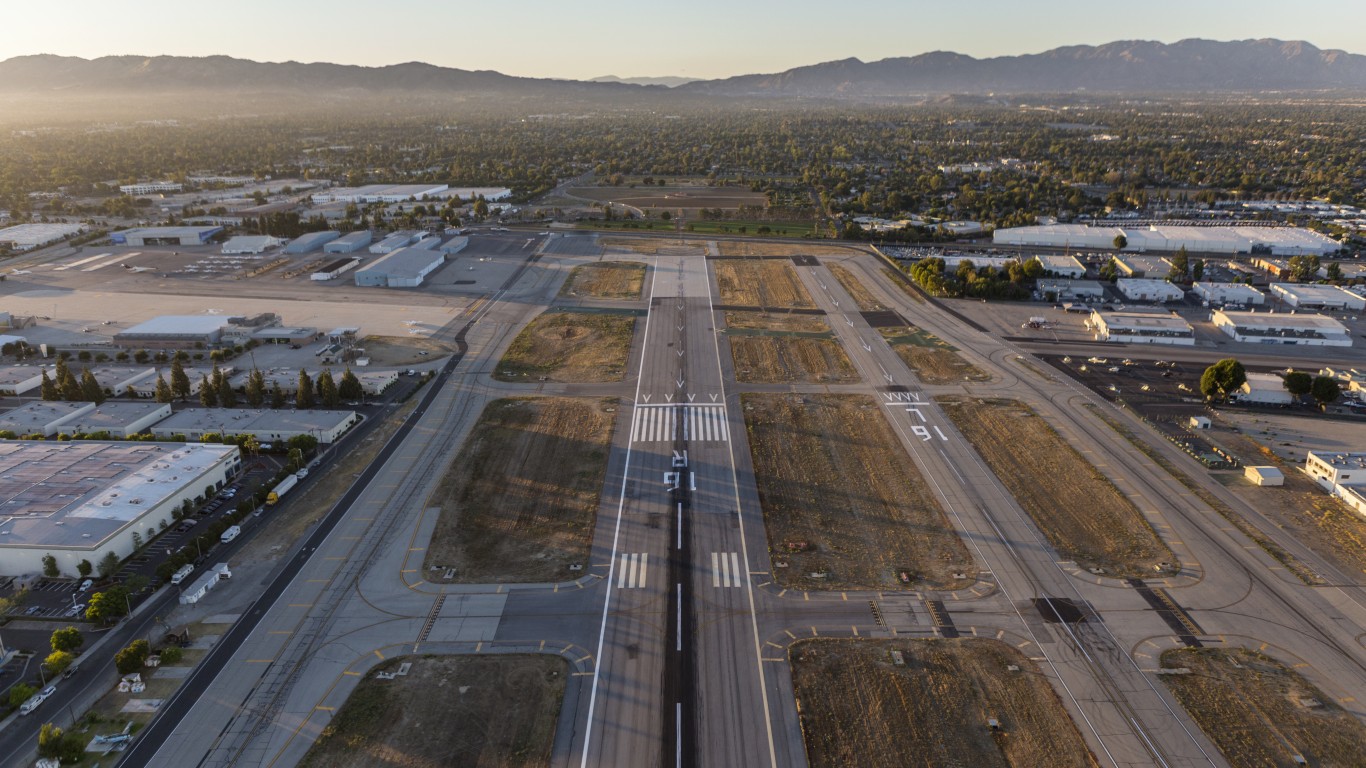
7. Van Nuys Airport Airport
> Lead emissions: 1,287 pounds
> Location: Van Nuys, CA
> Est. population within one mile: 17,063
> Pct. of local population under five years old: 8.0%
[in-text-ad-2]

6. Orlando Sanford Airport
> Lead emissions: 1,326 pounds
> Location: Orlando, FL
> Est. population within one mile: 2,664
> Pct. of local population under five years old: 3.3%

5. Northwest Regional Airport
> Lead emissions: 1,370 pounds
> Location: Roanoke, TX
> Est. population within one mile: 1,626
> Pct. of local population under five years old: 10.2%
[in-text-ad]
4. Centennial Airport
> Lead emissions: 1,492 pounds
> Location: Denver, CO
> Est. population within one mile: 2,316
> Pct. of local population under five years old: 7.8%
3. Ernest A. Love Field Airport
> Lead emissions: 1,503 pounds
> Location: Prescott, AZ
> Est. population within one mile: 257
> Pct. of local population under five years old: 1.2%
2. Long Beach-Daugherty Field Airport
> Lead emissions: 1,567 pounds
> Location: Long Beach, CA
> Est. population within one mile: 971
> Pct. of local population under five years old: 1.9%
[in-text-ad-2]
1. Phoenix Deer Valley Airport
> Lead emissions: 1,851 pounds
> Location: Phoenix, AZ
> Est. population within one mile: 729
> Pct. of local population under five years old: 6.8%
It’s Your Money, Your Future—Own It (sponsor)
Retirement can be daunting, but it doesn’t need to be.
Imagine having an expert in your corner to help you with your financial goals. Someone to help you determine if you’re ahead, behind, or right on track. With SmartAsset, that’s not just a dream—it’s reality. This free tool connects you with pre-screened financial advisors who work in your best interests. It’s quick, it’s easy, so take the leap today and start planning smarter!
Don’t waste another minute; get started right here and help your retirement dreams become a retirement reality.
Thank you for reading! Have some feedback for us?
Contact the 24/7 Wall St. editorial team.
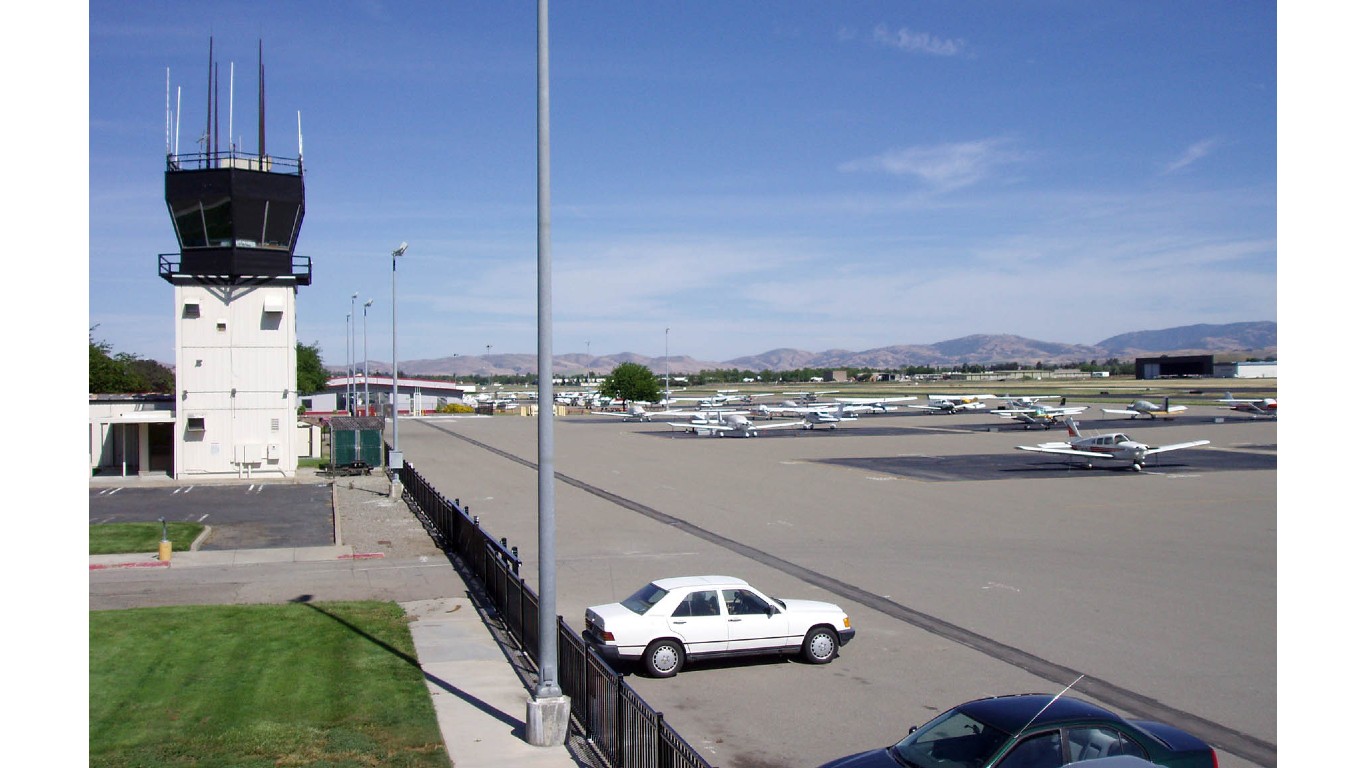

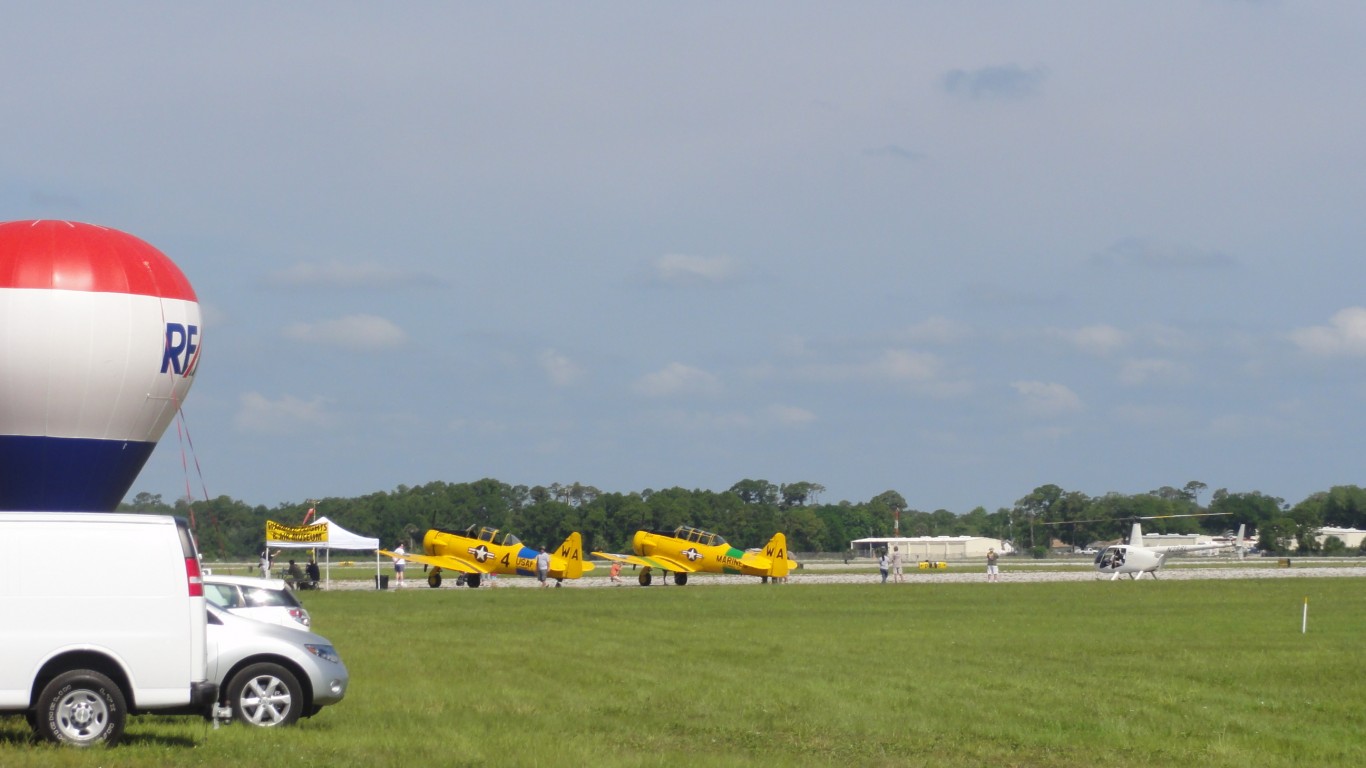
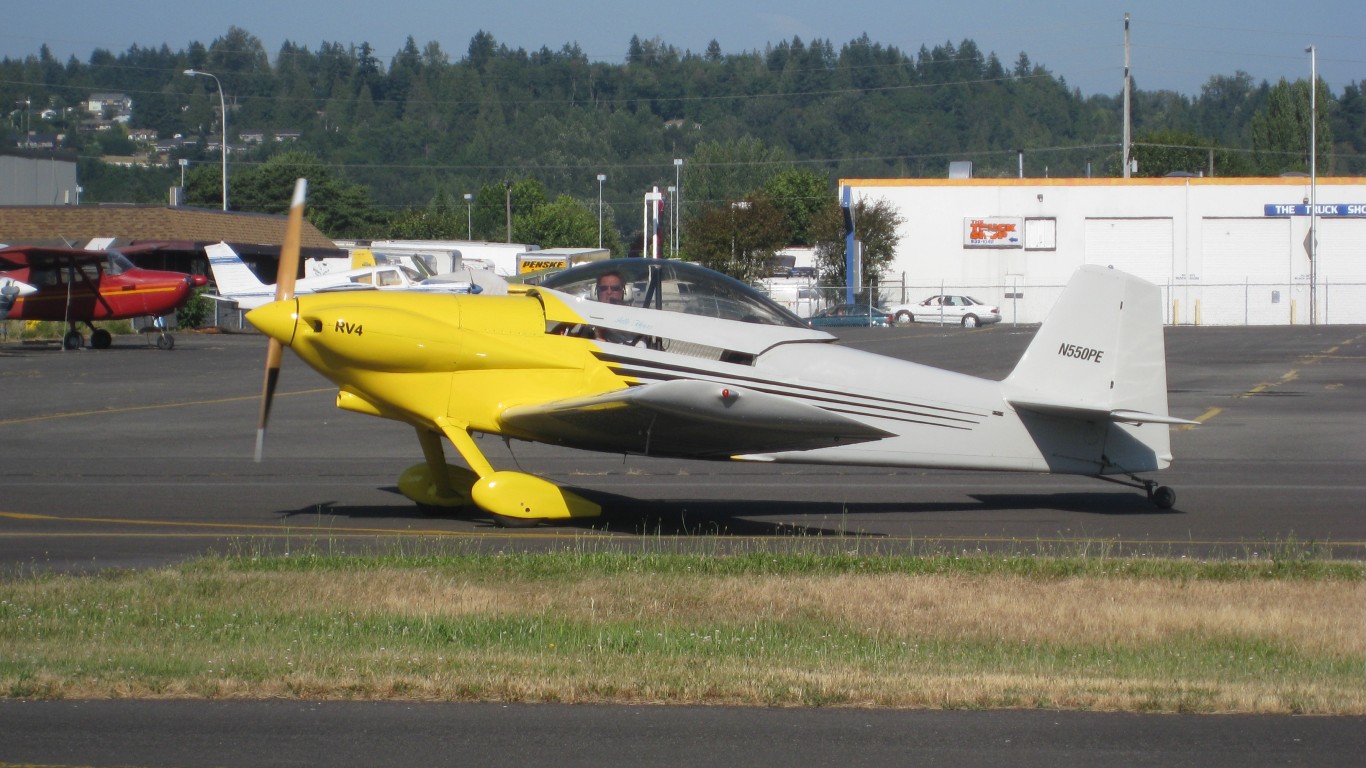
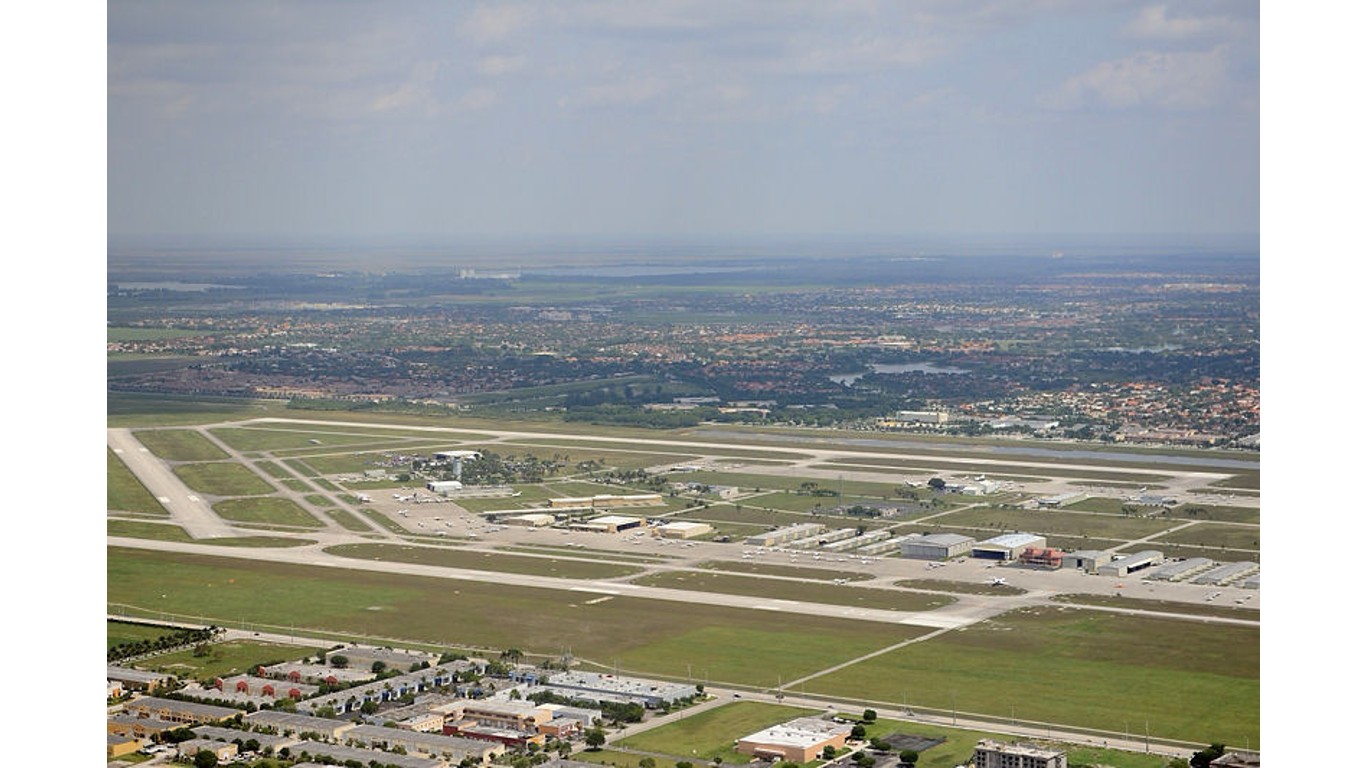
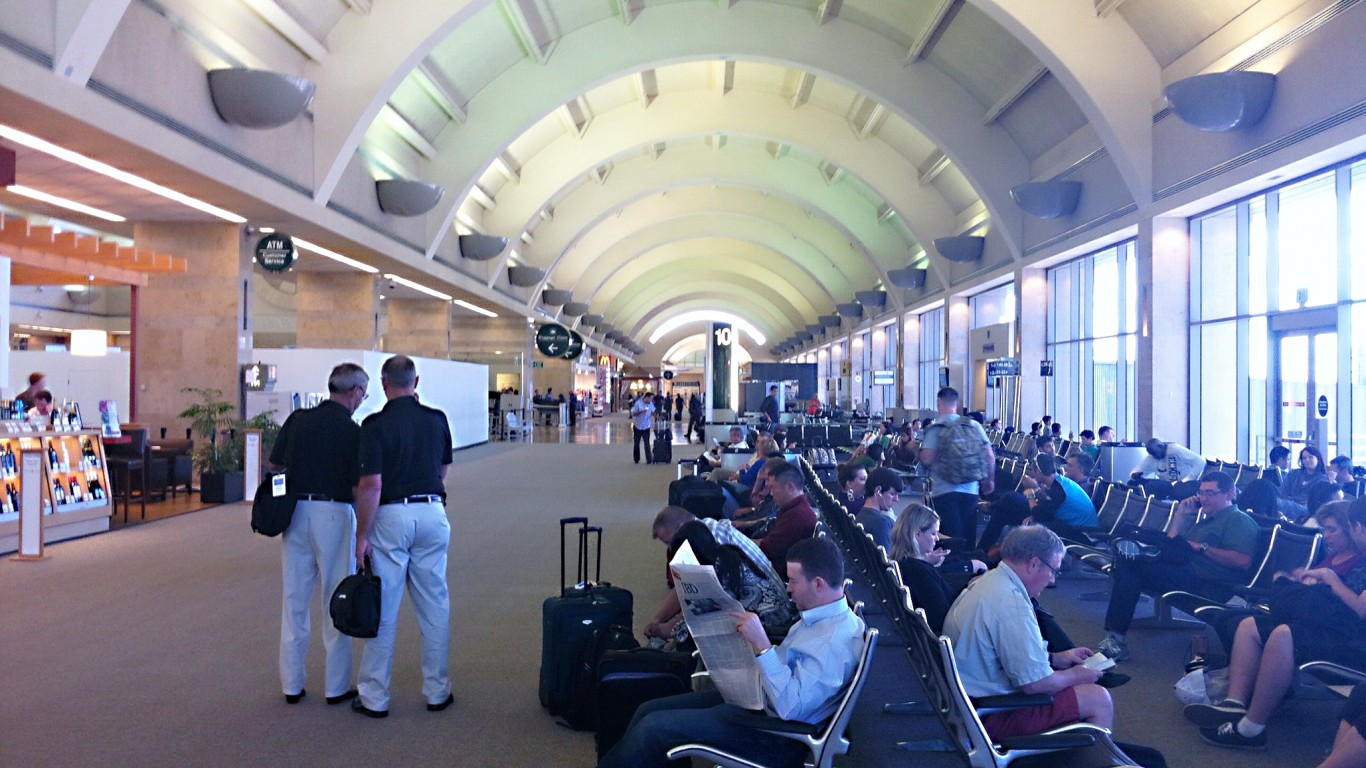
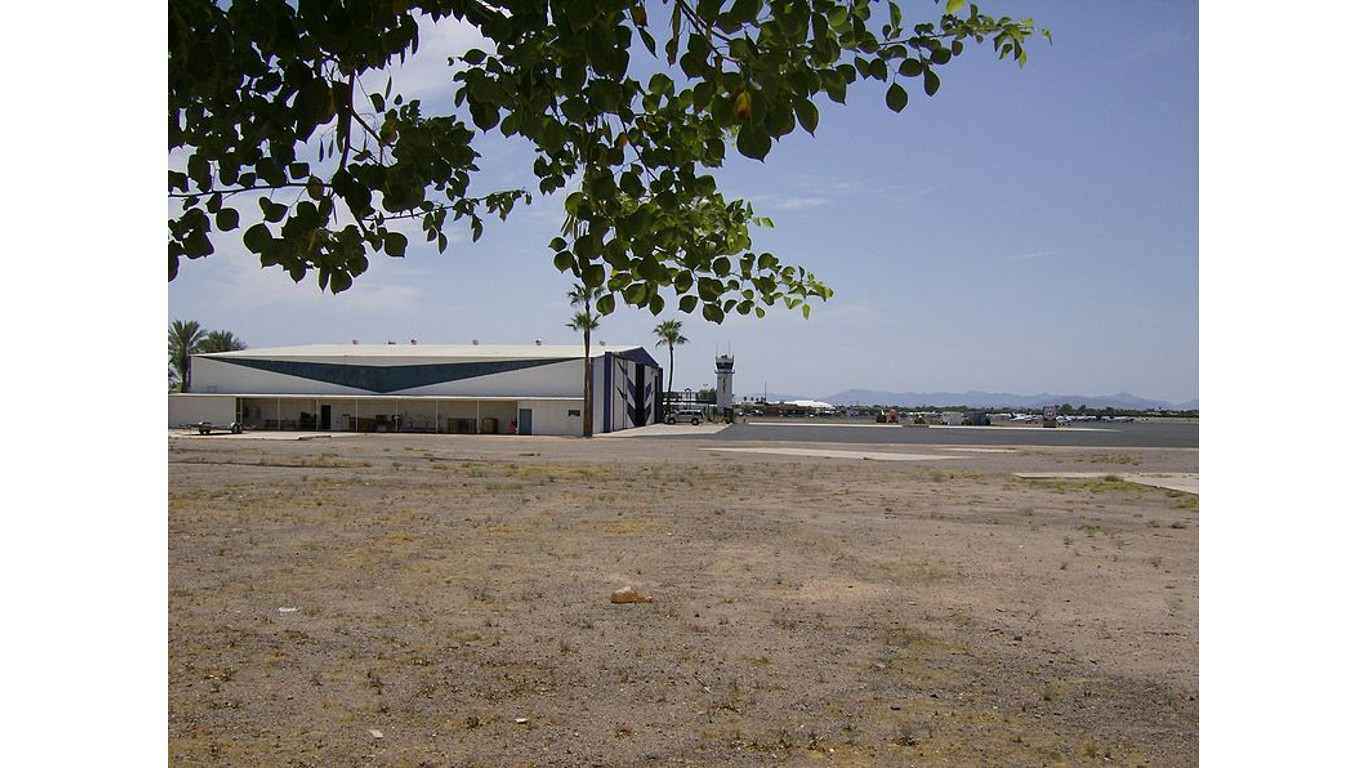
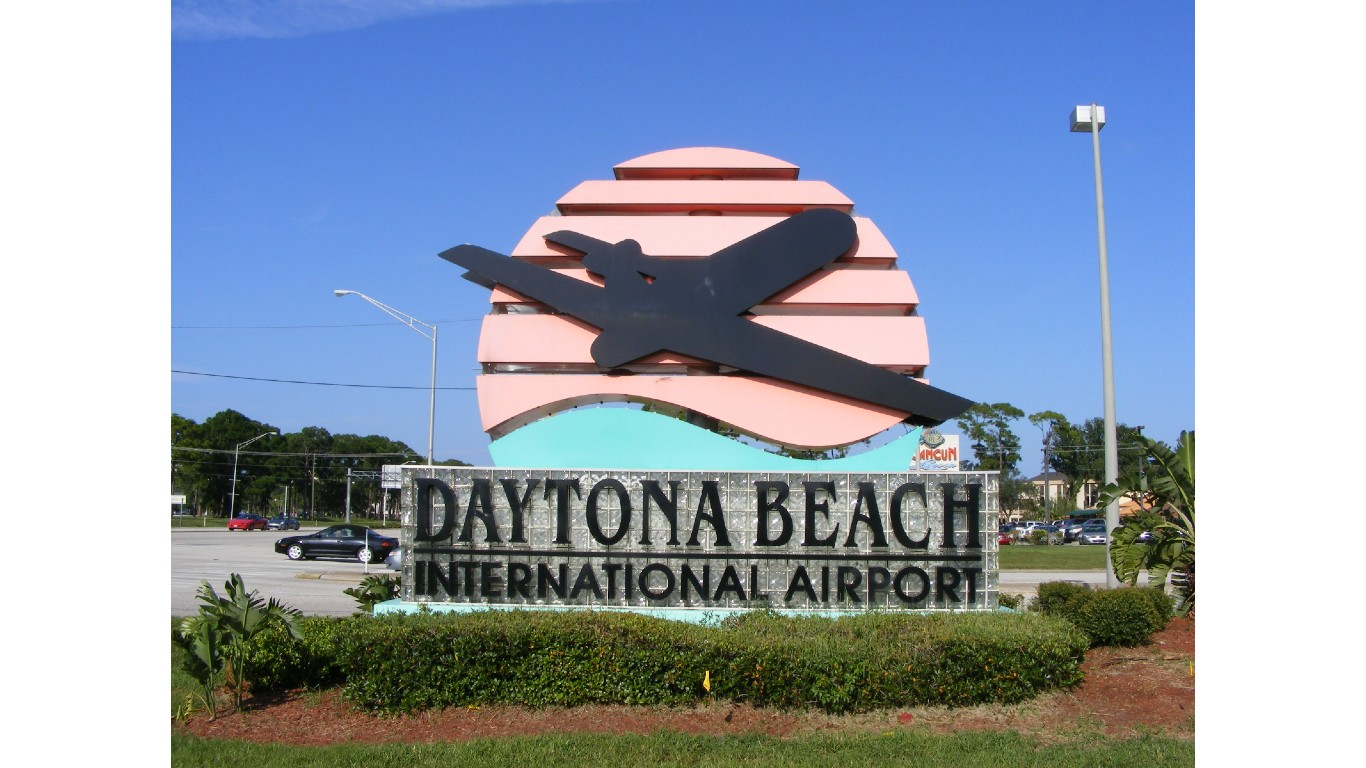
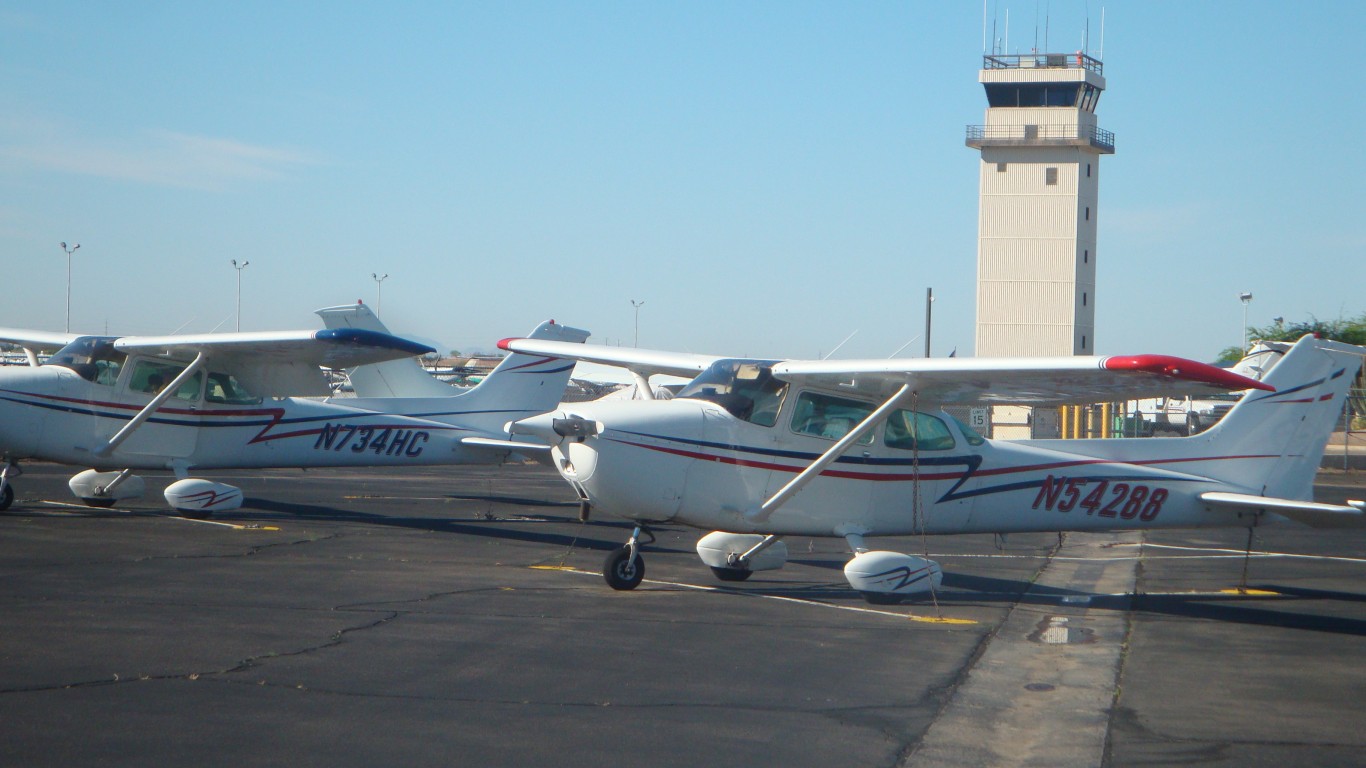
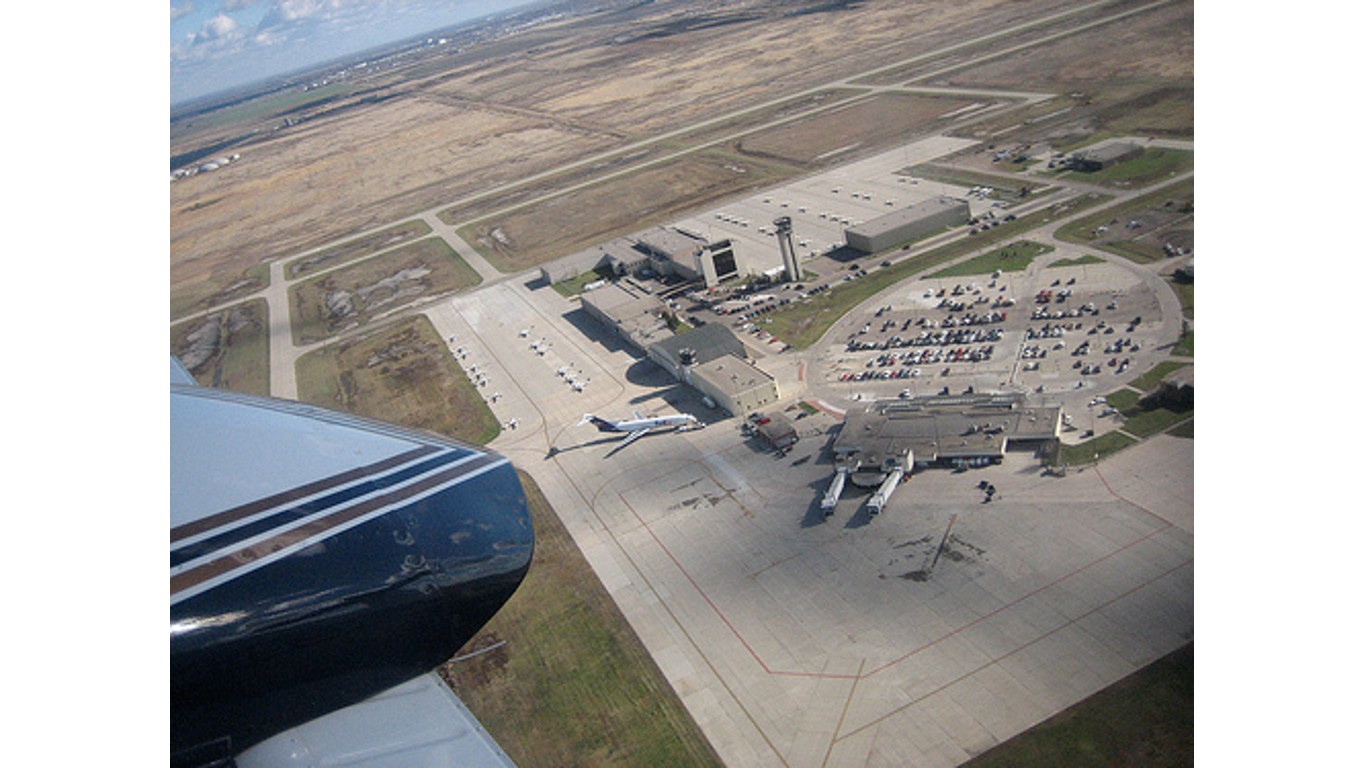

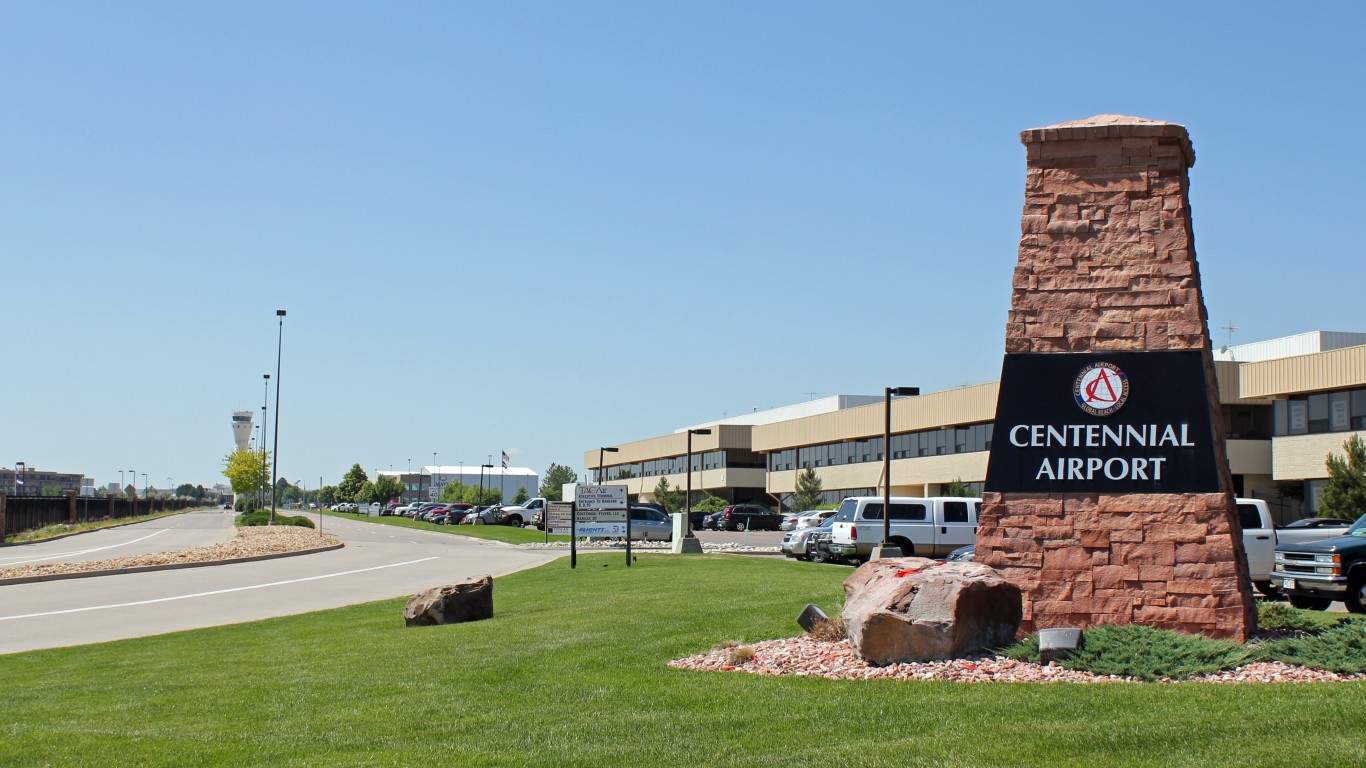
 24/7 Wall St.
24/7 Wall St.
